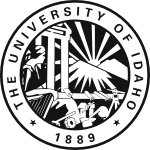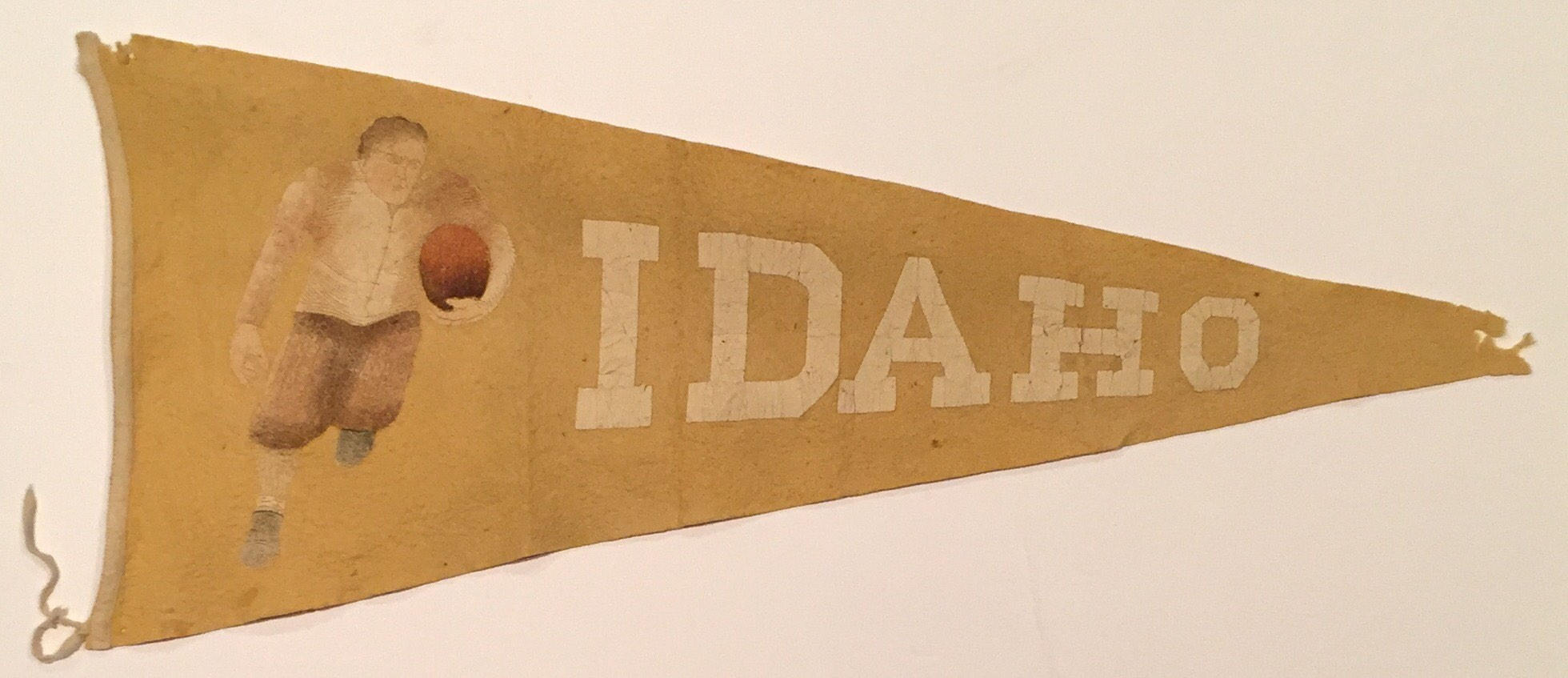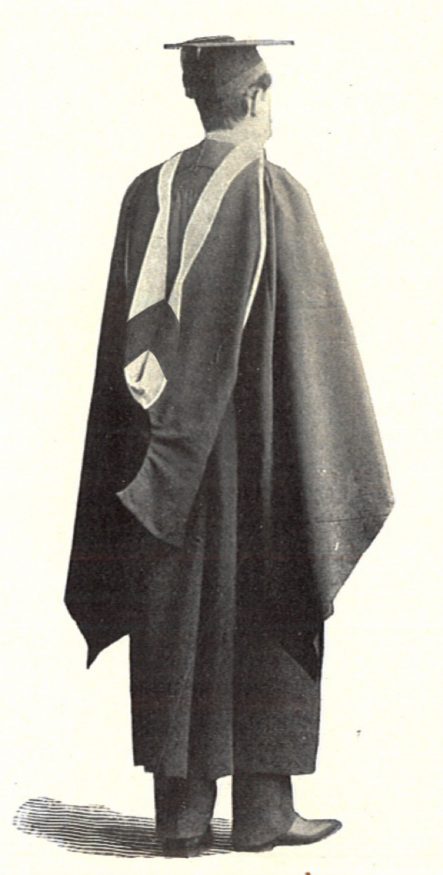University of Idaho
Idaho
1889



Citations in the World Almanac (listed by cover date; color information is from the previous year): yellow/white (1896-1900); silver/gold (1902); yellow/white (1904); silver/gold (1906-1916); yellow/white (1917-1918); silver/gold (1923-1935)
Because metallic fabrics were not used by academic costume manufacturer Cotrell & Leonard (the depository for the Intercollegiate Bureau of Academic Costume), the Bureau assigned color descriptions of “yellow”, “orange”, “gold”, and “old gold” in a roughly synonymous manner, as were “white”, “silver”, “gray”, and “silver gray”, depending upon the shades of the color samples of gold or silver fabric a college or university sent the Intercollegiate Bureau.
For instance, the school colors of the University of Idaho were silver and gold, but according to academic hood lists published by the Intercollegiate Bureau of Academic Costume (IBAC) in 1927 and 1948, the Bureau initially assigned the university a hood lined white with a reversed (inverted) gold chevron. Idaho’s chevron was inverted to avoid duplicating the hood the Bureau had already assigned to Smith College (white with a gold chevron) in first decade of the 1900s.
Idaho must have developed their own hood lining system in the late 1940s or 1950s, because a list compiled by Kevin Sheard in Academic Heraldry in America (1962) described the university’s hood lining as silver with two gold chevrons for earned degrees and silver with a gold bar for honorary degrees. Intercollegiate Bureau lists from 1969 and 1972 only described the hood for Idaho’s earned degrees: silver with two gold chevrons.
Here the original pre-1927 IBAC pattern has been used here with corrected colors of silver and gold.


Students chose silver and gold as the school colors of the University of Idaho in the fall of 1892, the first semester the new university held classes. The late 19th century was a time when the mineralogical wealth of the newly admitted state was being promoted, so the colors would have seemed appropriate.
